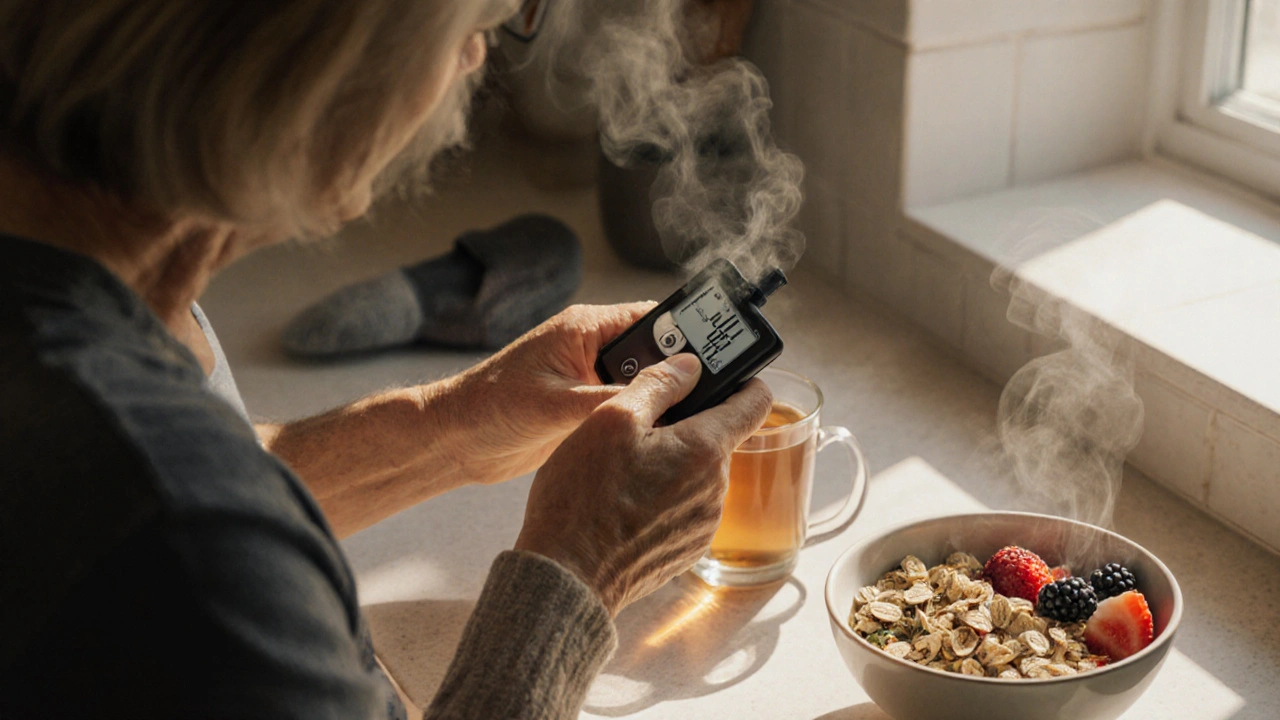Blood Sugar Control: Simple, Practical Steps You Can Start Today
High or swinging blood sugar makes you feel tired, fuzzy, or hungry at odd times. You don’t need complicated plans to get better control — small, consistent changes move the needle. Below are clear, usable steps you can try this week, plus when it’s time to call your clinician.
Daily habits that lower blood sugar
Eat with a purpose. Instead of cutting out carbs completely, pair them with protein, healthy fats, and fiber. For example, have oatmeal with plain Greek yogurt and berries rather than a bowl of sweetened cereal. Fiber slows glucose absorption and helps steady your readings.
Choose whole foods over processed ones. Swap white bread, sugary drinks, and packaged snacks for whole grains, vegetables, nuts, and water or unsweetened tea. Portion control matters: use your plate — half non-starchy veg, a quarter lean protein, a quarter whole grain or starchy veg.
Move after meals. A 10–30 minute walk after eating lowers the post-meal glucose spike. Add two strength-training sessions a week — building muscle improves insulin sensitivity over time.
Sleep and stress. Aim for 7–8 hours of sleep and use simple stress tools like short breathing breaks or a brisk walk. Poor sleep and chronic stress raise blood sugar through hormones like cortisol.
Limit sugary drinks and fruit juices. Liquid sugars hit the bloodstream fast. If you crave sweetness, try sparkling water with lemon, or a small piece of fruit with nut butter.
Monitoring, targets, and when to seek help
Check your numbers so you know what works. Common targets used by many clinicians are fasting 80–130 mg/dL and 1–2 hours after a meal under 180 mg/dL, with an A1c goal often near or below 7% for many adults. Your target might differ — ask your provider.
Keep a short log: time, food, activity, and your glucose reading. Patterns show up quickly — like higher numbers after certain meals or when you skip walks.
Medications count. If you’re on metformin or other drugs, take them as prescribed and talk to your clinician before changing anything. If you’re curious about non-drug options or supplements, read our guide “Best Herbal Metformin Alternatives: Cinnamon, Fenugreek & More for Blood Sugar Control” to see what the evidence says and what’s realistic.
When to call your clinician: persistent high readings despite changes, frequent low readings, or symptoms like extreme thirst, blurred vision, sudden weight loss, or confusion. These need timely attention.
Want practical next steps? Start a one-week trial: swap one processed snack for a whole-food option, add a 15-minute post-meal walk, and log your fasting and post-meal readings. Small wins add up fast.
Explore our related articles for deeper tips — from herbal approaches and fermented foods like kefir to safe medication guides — and use what fits your life. Take one clear step today and see how you feel tomorrow.

Blood Sugar Control and Diabetic Peripheral Neuropathy: Key Management Strategies
Learn how tight blood sugar control can prevent and ease diabetic peripheral neuropathy. Get practical tips on targets, lifestyle changes, meds, and monitoring for better nerve health.

9 Promising Metformin Alternatives in 2025 for Diabetes Management
In the constantly evolving world of diabetes management, Metformin has stood as a steadfast choice for many years. However, by 2025, a variety of innovative alternatives have emerged offering new avenues for those unable to tolerate or seeking an alternative to Metformin. Each alternative presents its own unique benefits and challenges. This article delves into nine compelling options that patients and healthcare providers could consider in their quest for effective diabetes control.
-
5.01.25 -
Alistair Mukondiwa -
9
- Health and Wellness (58)
- Drug Information (45)
- Pharmacy Information (19)
- Medical Conditions (17)
- Supplements (4)
- Travel Health (2)
- Parenting (2)
- Diabetes (2)
- Mental Health (2)
- Heart Health (1)
-
How to Safely Buy Risperdal Online: A Complete 2025 Guide
12 Aug 2025 -
Nail Disorders: How to Tell Fungal Infections Apart from Psoriatic Changes
15 Dec 2025 -
How States Use Medicaid Generic Drug Policies to Cut Prescription Costs
19 Dec 2025 -
Linezolid and Serotonin Syndrome: What You Need to Know About Antidepressant Risks
17 Nov 2025 -
Buy Cheap Generic Viagra Online - Safe Guide 2025
7 Oct 2025

2.10.25
Alistair Mukondiwa
6